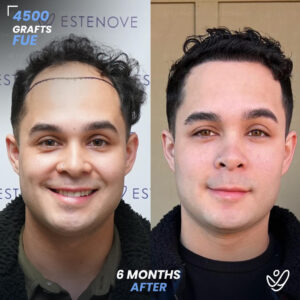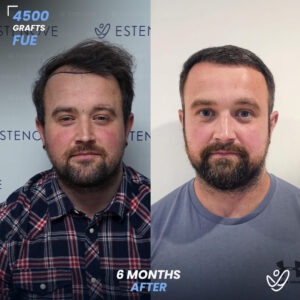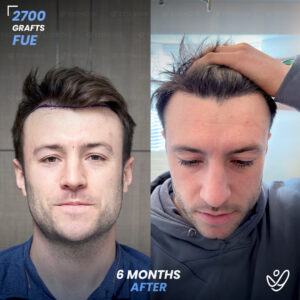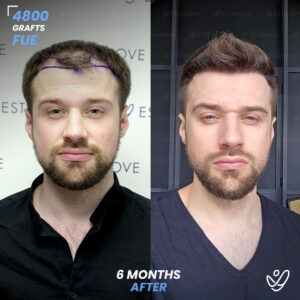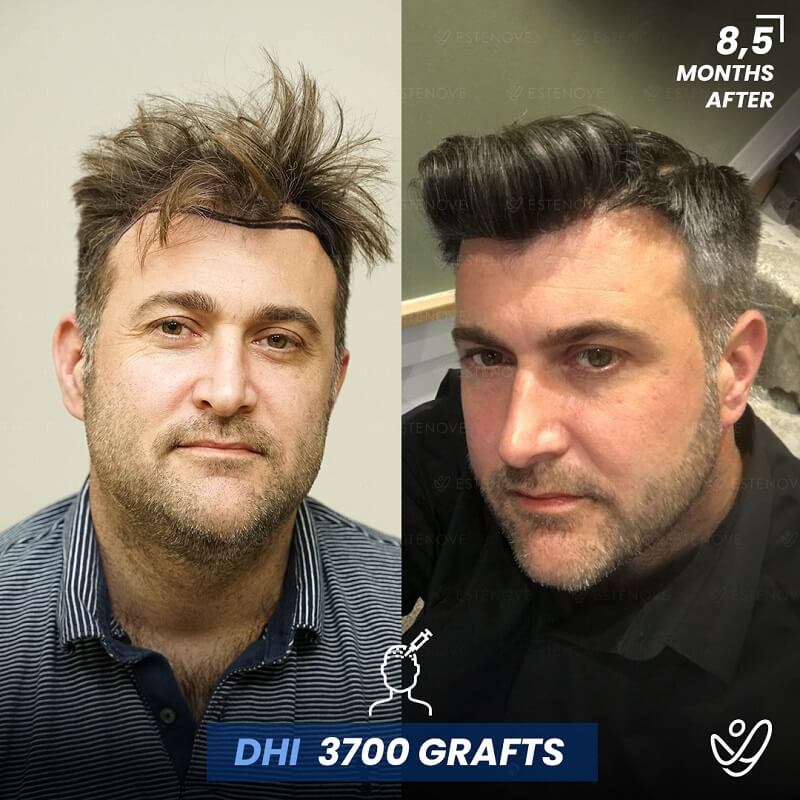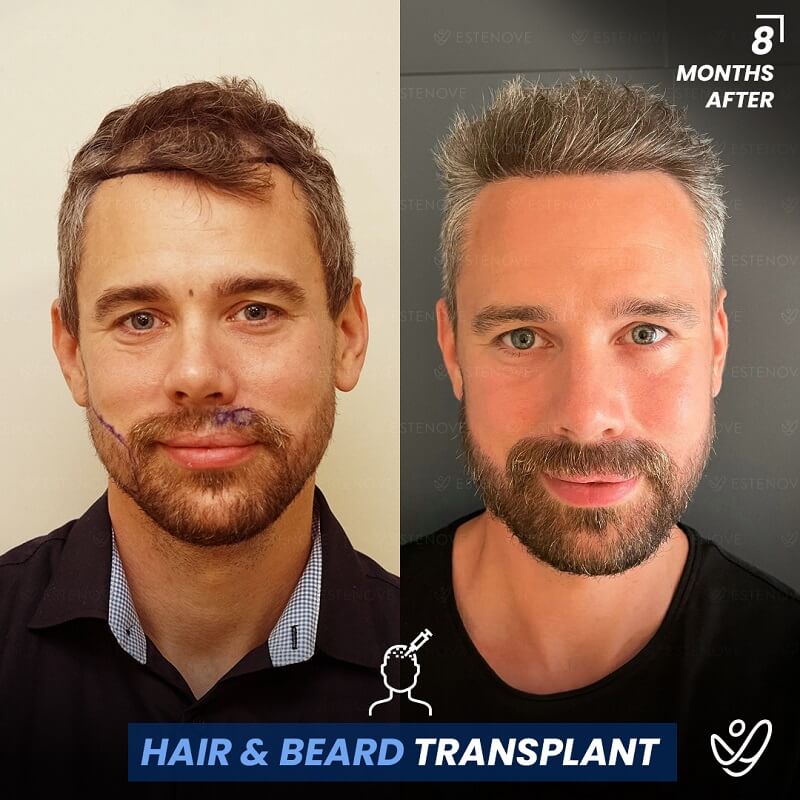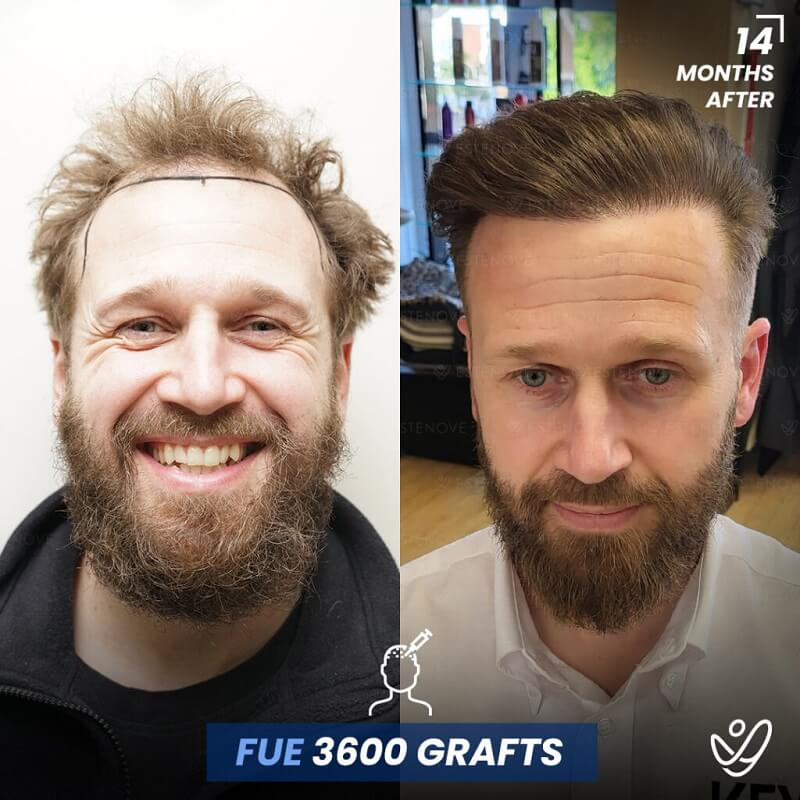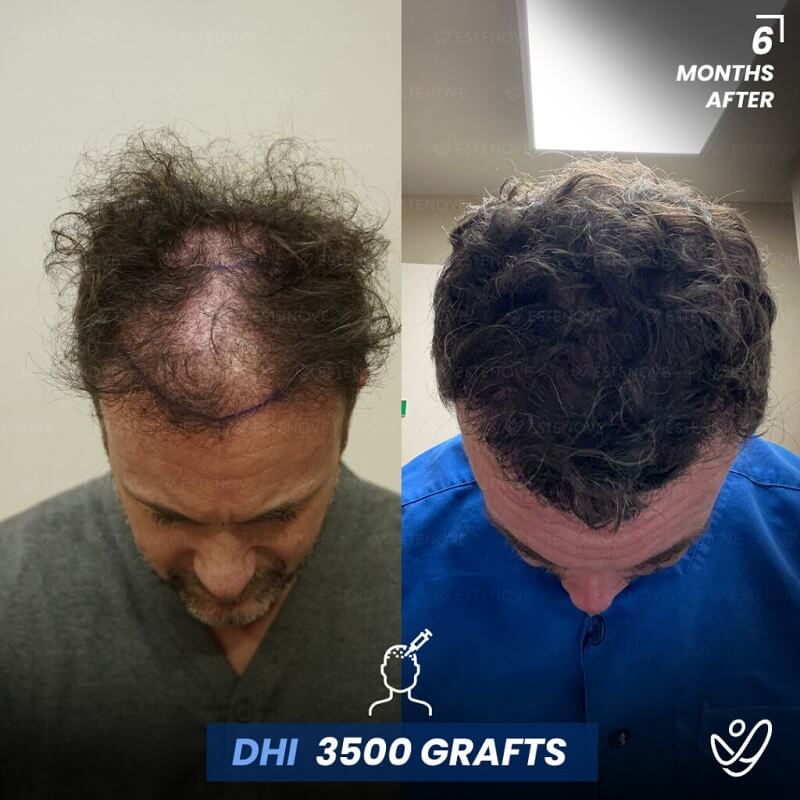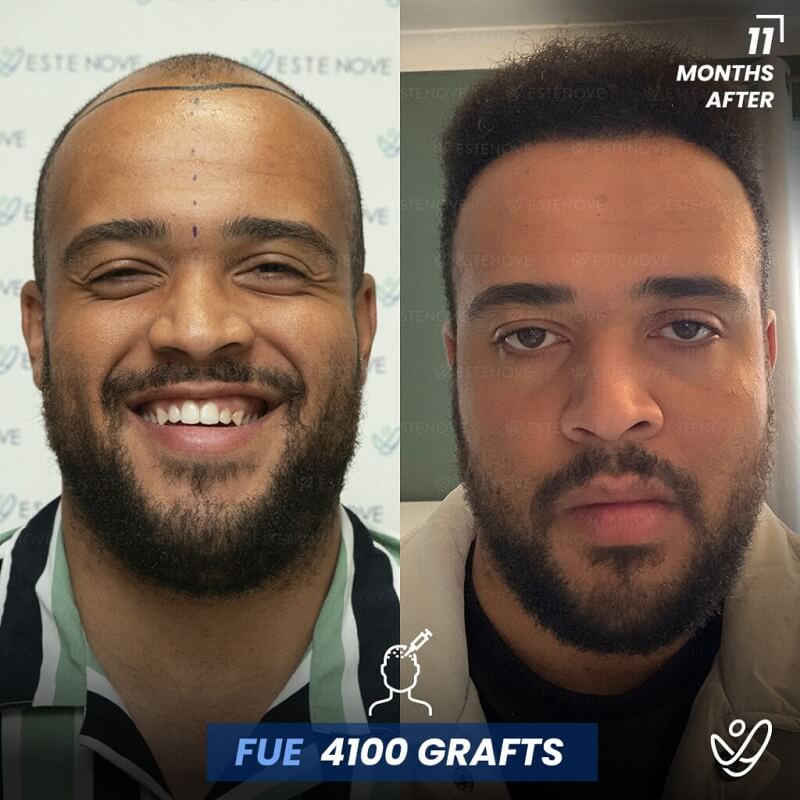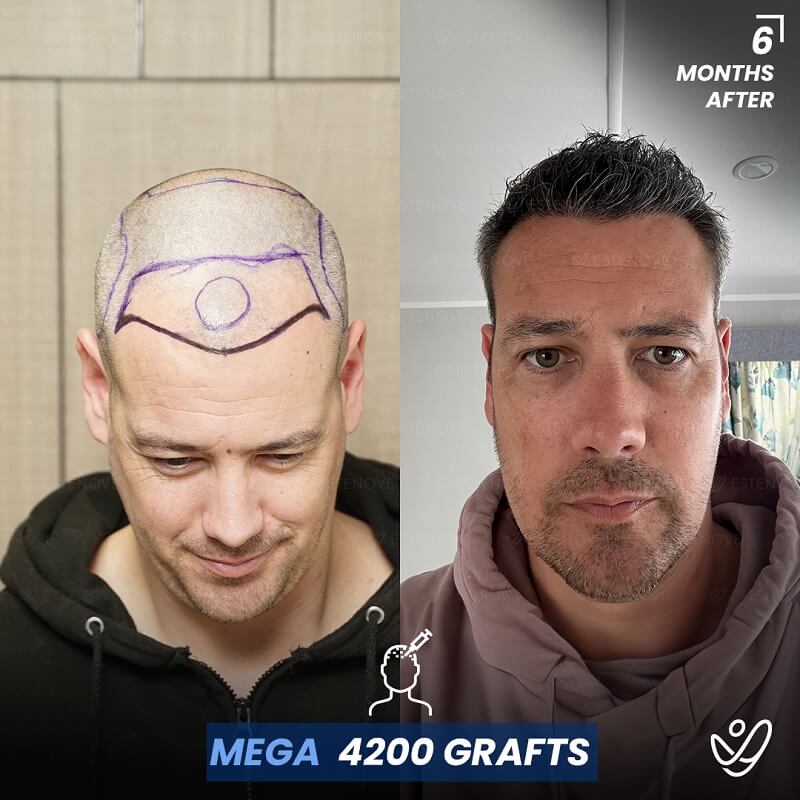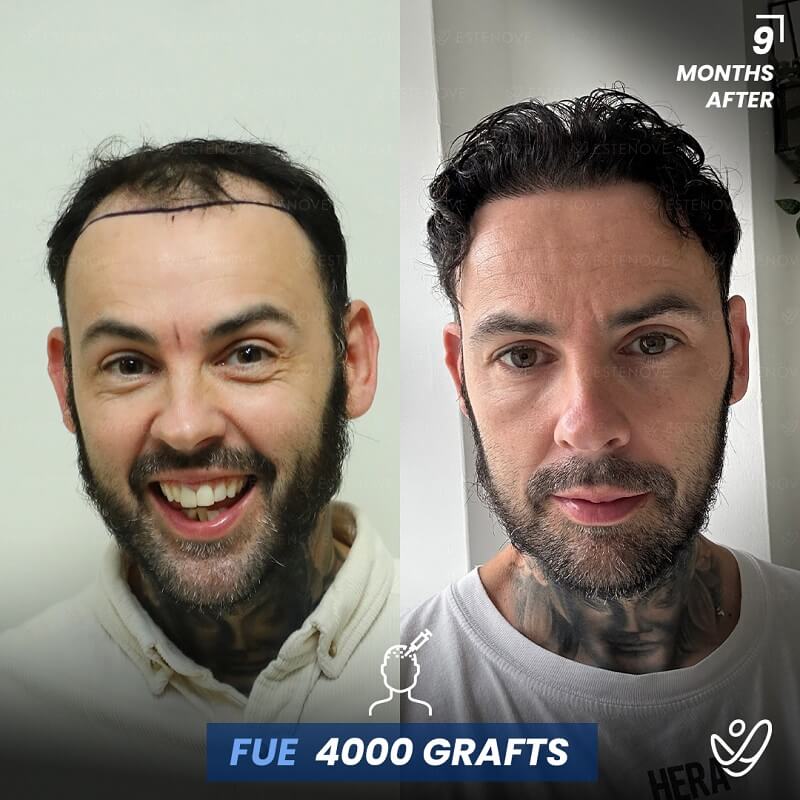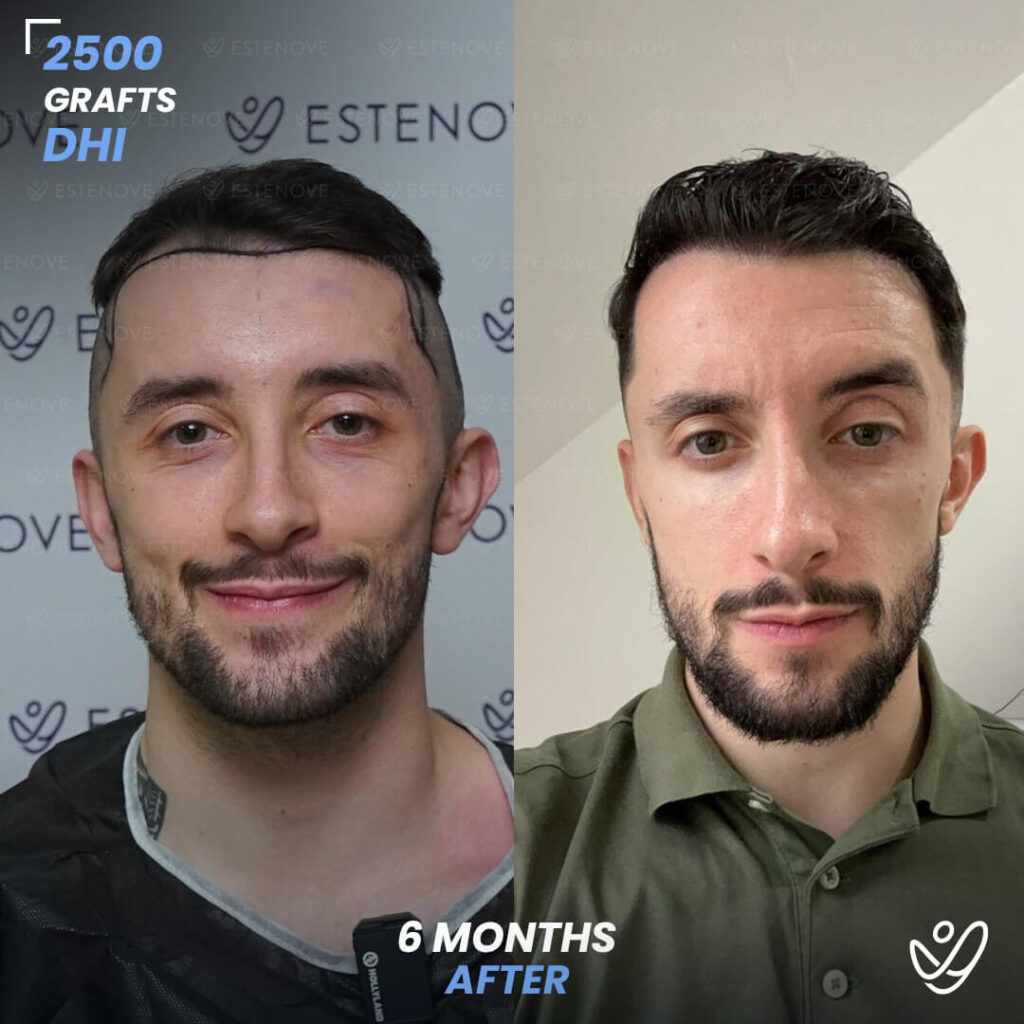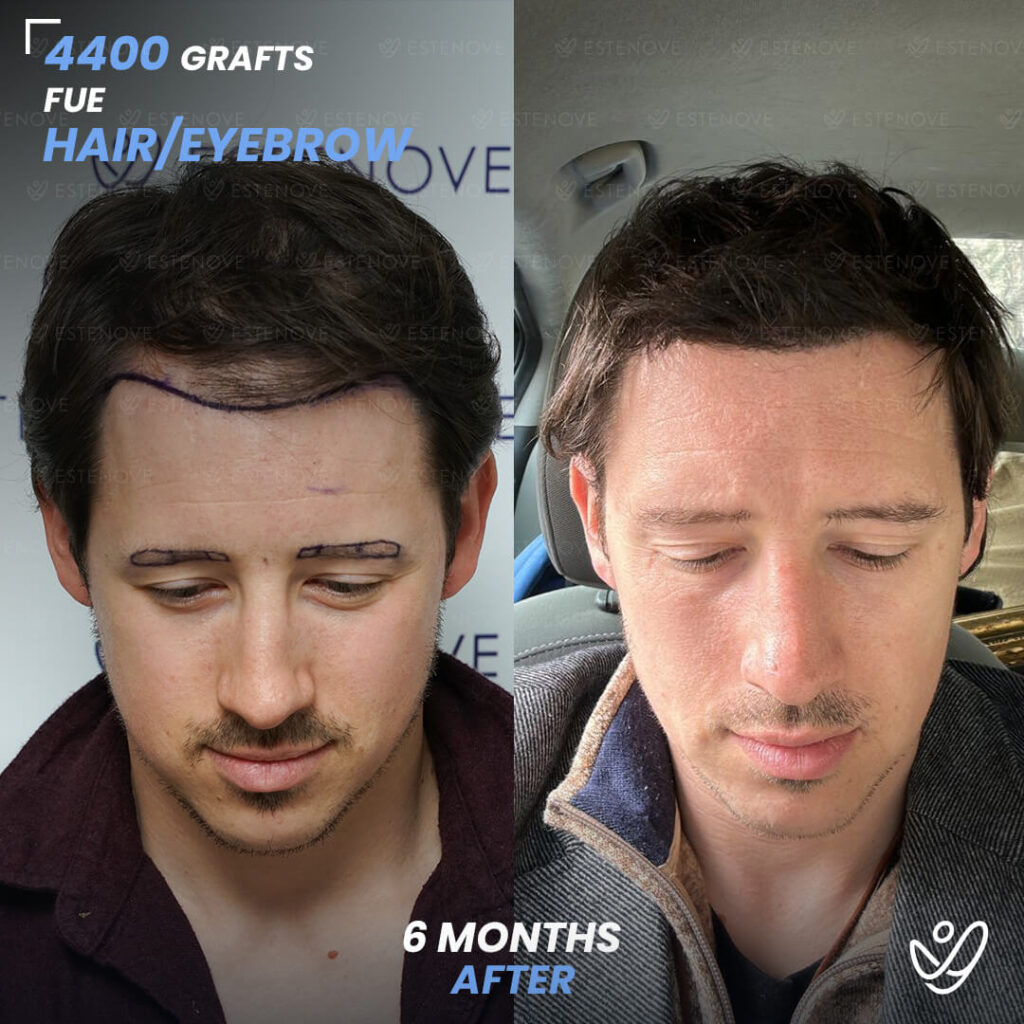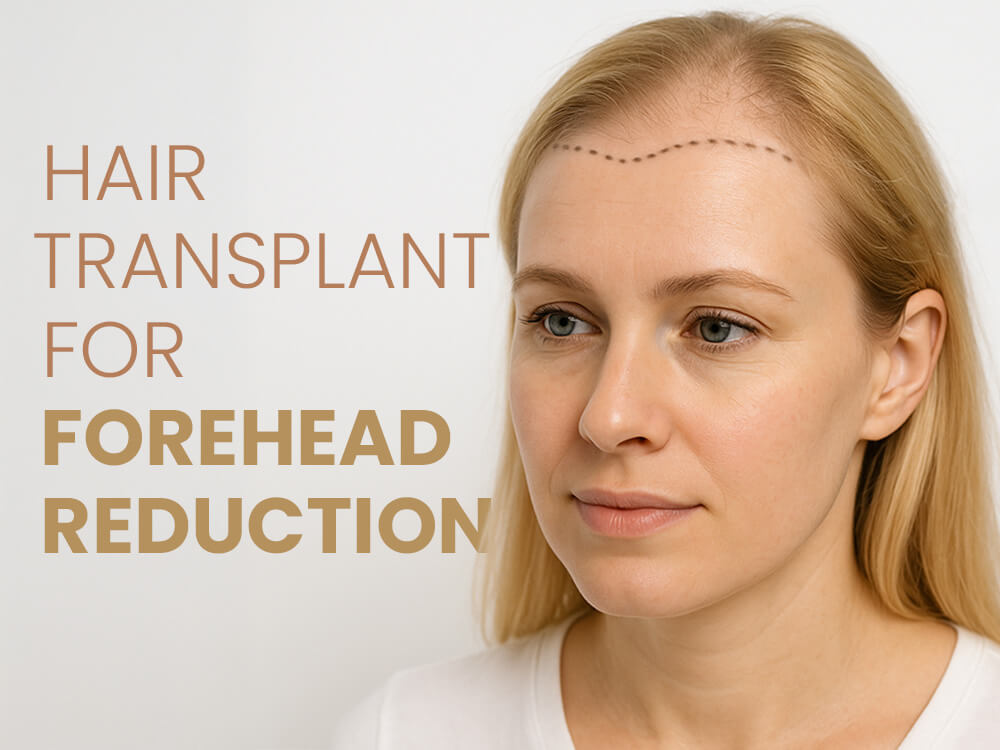
If you’ve ever wished your forehead was smaller or your hairline a little lower, you’re not alone. A high or receding hairline can affect facial balance and confidence—especially in men and women with genetically larger foreheads or those who’ve experienced early hairline thinning. In Turkey, forehead hair transplants offer a surgical solution to restore facial harmony through strategic hairline advancement and graft placement.
What Is a Forehead Hair Transplant?
A forehead hair transplant, also called hair grafting for forehead or forehead hairline lowering, is a procedure that uses your own hair follicles to reconstruct or lower the hairline. It’s commonly used to create a more proportionate forehead or fix a receding frontal hairline.
This differs from surgical forehead reduction (which involves removing skin from the scalp). Hair transplantation is less invasive, leaves no scalp excision scar, and delivers more natural, customizable results.
- FUE 4500 Graft Hair Transplant 6 Months Before After, Patient Age: 27 – Front
- DHI 2900 Grafts 9 Months Before&After – Front
- FUE 4500 Grafts 6 Months Before&After – Front
- FUE 2700 Grafts 6 Months Before&After – Front
- FUE 4800 Grafts 6 Months Before&After – Front
- DHI 4300 Grafts 6 Months Before&After – Front
Ready to restore your hair?
Get in touch anytime — our experts are here 24/7 for a free online consultation
Who Is a Good Candidate?
- People with a genetically high forehead
- Men or women with frontal hairline recession
- Individuals seeking to balance facial proportions without major surgery
- Patients with stable hair loss and good donor hair density
For some, a forehead hair transplant is combined with hairline lowering surgery for more dramatic results.
How Hair Grafting for Forehead Works
During the procedure, hair follicles (usually 1,500–3,000 grafts) are extracted from the back of the scalp and carefully implanted along the new, lower hairline. Surgeons design a natural-looking curve based on facial symmetry, age, and ethnic characteristics. Grafts are placed at precise angles to replicate natural growth.
This method can reduce the forehead by 1–3 cm on average, depending on the hairline design and available grafts.

Calculate the number of grafts needed for your hair transplant and get an estimated cost for various destinations
Can a Hair Transplant Reduce Forehead Size?
Yes. A hair transplant to lower the forehead can visually reduce forehead height without altering the bone structure. By bringing the hairline forward, the face appears shorter and more balanced. This effect is especially transformative for patients with a prominent forehead due to genetics or aging.
Best Technique for Lowering the Hairline with Transplants
FUE (Follicular Unit Extraction) is the preferred method for forehead hair implants due to its precision, minimal scarring, and natural hairline design flexibility. DHI may also be used in some cases, depending on density goals and graft control needs.
At Estenove, both options are priced equally and tailored to your facial features.
Read more on FUE vs DHI.
Forehead Hair Transplant: Before & After Results
Results from forehead hair transplants begin to show at 4–6 months, with full density usually visible by month 12.
Forehead Hair Transplant Cost in Turkey
Forehead hair transplants typically require between 2,000 and 4,000 grafts. Based on Turkey’s average cost per graft, the total price can vary accordingly. For example, a 2,000 graft procedure may range from $1,400 to $2,250, while 3,000 grafts may cost between $2,100 and $3,375. For more extensive cases requiring 4,000 grafts, the cost typically falls between $2,800 and $4,500.
At Estenove, the cost is fixed at $3,750 regardless of graft count and includes accommodation, transfers, and aftercare. Learn more on our hair transplant packages page or fill the form below to get free online consultation:
Sources
- Hair Transplantation: Basic Concepts and New Advances – NCBI https://pmc.ncbi.nlm.nih.gov/articles/PMC6388556/
- Hair loss types: Frontal fibrosing alopecia overview – American Academy of Dermatology https://www.aad.org/public/diseases/hair-loss/types/frontal-fibrosing-alopecia
- Hair loss: Diagnosis and treatment – American Academy of Dermatology https://www.aad.org/public/diseases/hair-loss/treatment/diagnosis-treat
- Hair Transplantation and Restoration – American Society of Plastic Surgeons (ASPS) https://www.plasticsurgery.org/cosmetic-procedures/hair-transplantation-and-restoration/procedure

